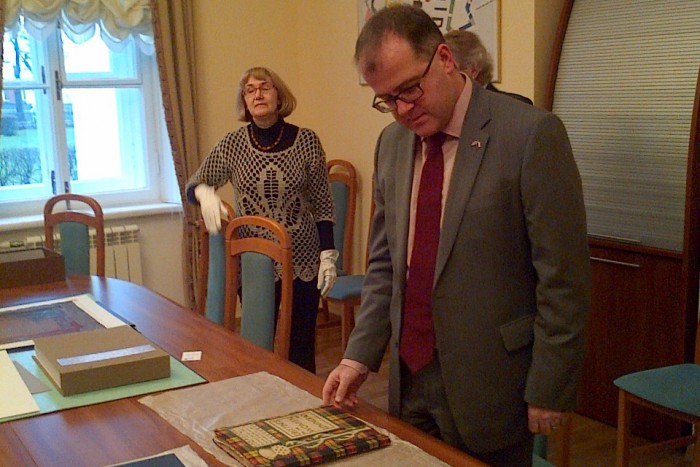St Andrew’s Day will be celebrated in St Petersburg, Moscow and other cities across Russia on 30 November. Both Moscow and St Petersburg have hosted annual St Andrew’s Day balls for many years and will do so again this year. The Scotland and Russia relationship is full of rich history and culture dating back over many hundreds of years. Scotland and Russia share the same patron saint, St Andrew, and the saltire was used by Peter the Great as the principal Russian order of knighthood.
It’s impossible to do justice in a blog post to the full range and depth of this relationship. Instead, I thought I would focus on North West Russia which has had particularly strong links with Scotland dating back to the very founding of the city of St Petersburg by Peter the Great in 1703. Peter the Great and his successors made very good use of Scottish physicians, architects and soldiers to help them create and run the beautiful city of St Petersburg and some of the magnificent estates in nearby Pushkin. Individuals like Bruce, Cameron, Wylie and others are still remembered today.
World War Two and the horrors of the Leningrad Siege also highlighted the strength of the relationship. The exchange of magnificent albums of friendship and support between the women of Coatbridge and Airdrie, and Leningrad are a very potent symbol of the strength of people to people contact in the most difficult of times. These original albums are carefully preserved in the Mitchell Library in Glasgow and the Peter & Paul Fortress in St Petersburg. The role played by the Arctic Convoys in delivering vital aid to Russia during World War Two is also an important part of Scotland’s relationship with Russia. Many of the convoys that set out for Russia sailed from the west coast of Scotland and many of the brave members of the Royal Navy and Merchant Navy who took part and lost their lives in the ‘worst journey in the world’ were Scottish. I should also mention an earlier but related connection from World War One when the ship RRS Discovery, which took Captain Scott and Ernest Shackleton to Antarctica in 1901-04, was used to ship supplies to Russia. Discovery is now berthed in her home port of Dundee, next to the site of the new V&A Design Museum which will bring an exciting new and innovative attraction to Scotland.
Twinning is also an important part of the relationship and the fostering of cultural and people to people connections. Glasgow is twinned with Rostov-on-Don, Perth with Pskov and Edinburgh has a long-term partnership with St Petersburg. These relationships have been used to promote a wide range of cultural cooperation over the years and remain important today. Perth and Pskov will shortly celebrate the 25th anniversary of their relationship.
St Petersburg hosts an annual ‘Days of Scotland’ series of events around Burns Night in late January. Burns remains popular in Russia and, as a native of Glasgow, I’ve always enjoyed listening to Russian guests reciting some of his works that they learned at school. The theme of Days of Scotland 2016 will be Charles Rennie Mackintosh which is highly appropriate given that 2016 is Scotland’s Year of Innovation, Architecture and Design.
As we celebrate St Andrew’s Day in St Petersburg, and hear the First Minister’s message, we will take the opportunity to reflect on Scotland’s relationship with Russia and why people to people contact and shared history remain as important today as they were when Scotsmen were helping to build St Petersburg, Russia’s ‘window to Europe’.

